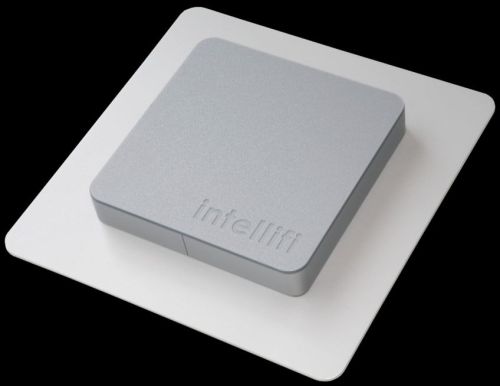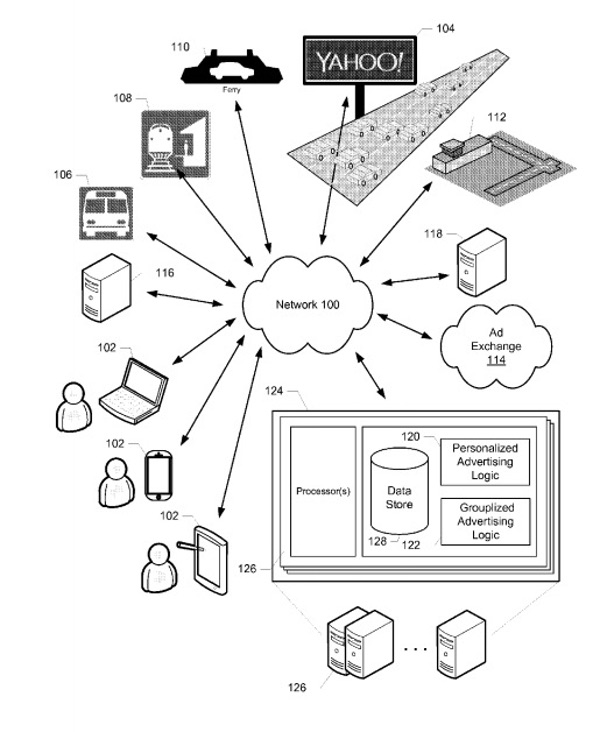
Resources
What Makes You Click (2016)
“The biggest psychological experiment ever is being conducted, and we’re all taking part in it: every day, a billion people are tested online. Which ingenious tricks and other digital laws ensure that we fill our online shopping carts to the brim, or stay on websites as long as possible? Or vote for a particular candidate?
The bankruptcies of department stores and shoe shops clearly show that our buying behaviour is rapidly shifting to the Internet. An entirely new field has arisen, of ‘user experience’ architects and ‘online persuasion officers’. How do these digital data dealers use, manipulate and abuse our user experience? Not just when it comes to buying things, but also with regards to our free time and political preferences.
Aren’t companies, which are running millions of tests at a time, miles ahead of science and government, in this respect? Now the creators of these digital seduction techniques, former Google employees among them, are themselves arguing for the introduction of an ethical code. What does it mean, when the conductors of experiments themselves are asking for their power and possibilities to be restricted?”
“Yahoo has a creepy plan for advertising billboards to spy on you”
Yahoo has filed a patent for a type of smart billboard that would collect people’s information and use it to deliver targeted ad content in real-time.
To achieve that functionality, the billboards would use a variety of sensor systems, including cameras and proximity technology, to capture real-time audio, video and even biometric information about potential target audiences.
But the tech company doesn’t just want to know about a passing vehicle. It also wants to know who the occupants are inside of it.
That’s why Yahoo is prepared to cooperate with cell towers and telecommunications companies to learn as much as possible about each vehicle’s occupants.”
“Various types of data (e.g., cell tower data, mobile app location data, image data, etc.) can be used to identify specific individuals in an audience in position to view advertising content. Similarly, vehicle navigation/tracking data from vehicles equipped with such systems could be used to identify specific vehicles and/or vehicle owners. Demographic data (e.g., as obtained from a marketing or user database) for the audience can thus be determined for the purpose of, for example, determining whether and/or the degree to which the demographic profile of the audience corresponds to a target demographic.”
“Dog Grabs Shoppers’ Attention Via Interactive Billboards”
An example of advertising meets personalisation for good-old manipulative marketing outcomes. Please excuse the barrage of branding/product mentions throughout the copy and media materials.
Also note how the point of deploying the technology is entirely covert and great lengths are gone to embed hidden tracking systems into the physical environment. Persons subjected to the advertising are also not told that they’re accepting a tracking device for the purposes of such advertising where the content displayed is specifically for tailored emotional manipulation much more than ordinary advertising. Persons later question if the experience was a “coincidence,” etc.
Emphasis added:
For two weeks this past spring, some shoppers at the Westfield Stratford shopping mall in the United Kingdom were followed by a homeless dog appearing on electronic billboards. The roving canine, named Barley, was part of an RFID-based advertisement campaign conducted by Ogilvy on behalf of the Battersea Dogs and Cats Home, a rehabilitation and adoption organization for stray animals. The enabling technology was provided by Intellifi, and was installed by U.K.-based RFID consultancy RFIDiom.
Ogilvy’s ad campaign was the brainchild of William Godfrey, an “experience designer” at the advertising agency. Ogilvy is a fan of Battersea—and of pets in general—Godfrey explains, and he thought about how technology could be used to bring the plight of homeless animals directly to the public in a memorable way. “I had the idea that it would be lovely to digitalize dogs,” he says, and radio frequency identification seemed the best technology to make it appear that a digitalized canine was following people in the way that an actual stray dog might do. Ogilvy had considered the use of other technologies, such as cameras, but ultimately decided that RFID would make the process seamless and automatic.
[…]Eric Jones, RFIDiom’s managing director, says he, too, is an animal lover. When Ogilvy suggested a campaign using RFID to put images of pets in front of shoppers on an individualized basis, Jones was up to the task, despite the short (two-week) deadline. It was a bit different than the company’s typical RFID deployments (which include document-tracking, supply chain management and industrial traceability solutions), and he says he and his engineers enjoy a good challenge.
The RFID system worked this way: representatives of the Battersea Dogs and Cats Home, including Fishersmith herself, greeted shoppers at the entrance, offering them an RFID-tagged Battersea brochure if they seemed especially interested in pets. To better judge this, one individual stood at the entrance holding a dog or cat from the shelter. Every shopper who walked up to the animal to get a closer look at or pet it received a brochure. Attached to that brochure was a Smartrac Frog 3D RFID inlay encoded with a unique ID number that the system would recognize. That ID was not connected to any data about the individual carrying the brochure, since the company’s intention was that shoppers would remain anonymous.
Consumers were not told that the brochure had any special technology built into it. Therefore, an individual could be surprised when the advertising video changed to a dog—Barley—when he or she approached the billboard.

An Intellifi Smartspot RFID reader.
A total of seven digital billboards, located in or near the mall, were RFID-enabled, according to Matthijs van der Weg, Intellifi’s CEO.
An Intellifi reader (known as a Smartspot), with as many as six antennas built into it, was installed at each of the seven billboard sites, and some of the readers were also fitted with an additional external Intellifi reader antenna. The reader detected the zone in which an individual was located. Each antenna supported two to three zones, with a single zone’s radius equal to a distance of three steps that a shopper might move while walking. The reader forwarded the brochures’ unique IDs and signal information to Intellifi’s Brain software on the server, which then calculated each shopper’s location relative to that particular billboard.
The location data was provided to Ogilvy’s content-management software, which displayed an image of a dog whose movements corresponded to that shopper’s location. If the person holding the RFID-tagged brochure was walking to the left, the dog followed in that direction. As he or she approached the screen, the animal on the video seemed to approach as well.
The system also tracked which screens a shopper had already passed. This allowed the billboards to play only video images that he or she had not already seen.
Some reader installations were easier than others, Jones says. At some billboards, for instance, there was a power source to which the reader could be connected, while in other cases RFIDiom installed standalone power units to energize the readers. It was important that the hardware not be apparent, he adds, and RFIDiom made a few creative adjustments to ensure that the readers, antennas and power units were obscured.
In some cases, the readers were painted green and hung in trees or placed in bushes near the screen, while others were attached to lampposts. One RFID-enabled billboard was located on a nearby footbridge that some shoppers traversed to reach the mall. In this case, RFIDiom installed flowerbeds with false bottoms and buried the readers in with the flowers.
During the two weeks in April, the system tracked hundreds of shoppers. “People did a bit of a double-take,” Fishersmith says. “At first, they weren’t sure if it was just a coincidence that the dog seemed to be following them.” In some cases, they approached the Battersea representatives in front of the mall to ask if their experience had just been a coincidence, and many wanted to repeat the process.Altogether, Godfrey says, shoppers carried about 700 brochures throughout the mall. The campaign’s successful result, he adds, “has put RFID on the radar” for other Ogilvy engineers. “I don’t think it will be the last time” Ogilvy will use such technology, he predicts, noting that the specific campaign will need to be one that benefits from the sense of having content follow an individual (in the same way Barley did).
“The main thing is that we proved it could be done,” Jones says, speaking on behalf of Intellifi and RFIdiom.
Here is some footage of people “interacting” with the system as part of the marketing campaign. The footage is basically an ad, it’s from the campaign’s website:
When our Televisions Watch Us
“George Orwell would be proud. Earlier this week Propublica discovered that more than 10 million Vizio televisions silently record what their owners are watching and send a live-stream of their viewing habits to a commercial company that uses it to profile them. Most disturbingly, Vizio ties this viewing information to the user’s IP address, allowing their offline interests to be used to target them with advertisements in the online world.
According to Vizio, the company uses this information to offer advertisers “highly specific viewing behavior data on a massive scale with great accuracy” thatrepresents a “revolutionary shift across all screens that brings measurability, relevancy and personalization to the consumer like never before.” Security vendor Avast published an analysis on Wednesday that dissects the data stream Vizio sends back, showing that it is essentially a low-resolution screen capture taken at regular intervals of whatever is on the screen at that moment.
Yet, for all of the uproar this discovery has caused, it is just part of a broader trend of humans being intricately profiled through the digital trails they leave. Hospitals and insurance companies are beginning to explore using public records and credit card purchase data to determine how healthy you are being in your daily life. For example, buying a pack of cigarettes at the gas station, buying donuts on the way home, stopping off at a fast food restaurant for lunch, or letting your gym membership lapse could all be reported back to your doctor and potentially used to increase your insurance rates.”
